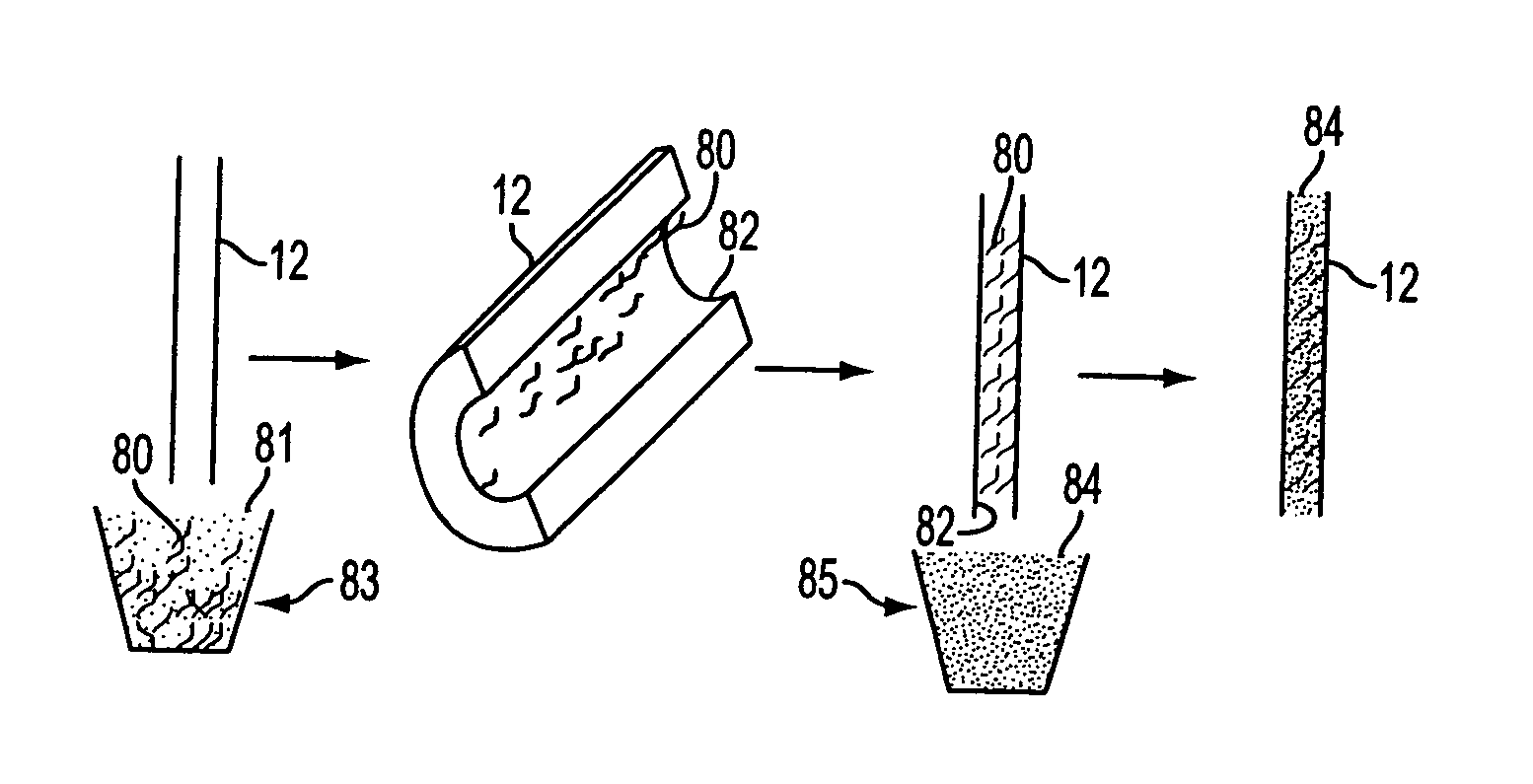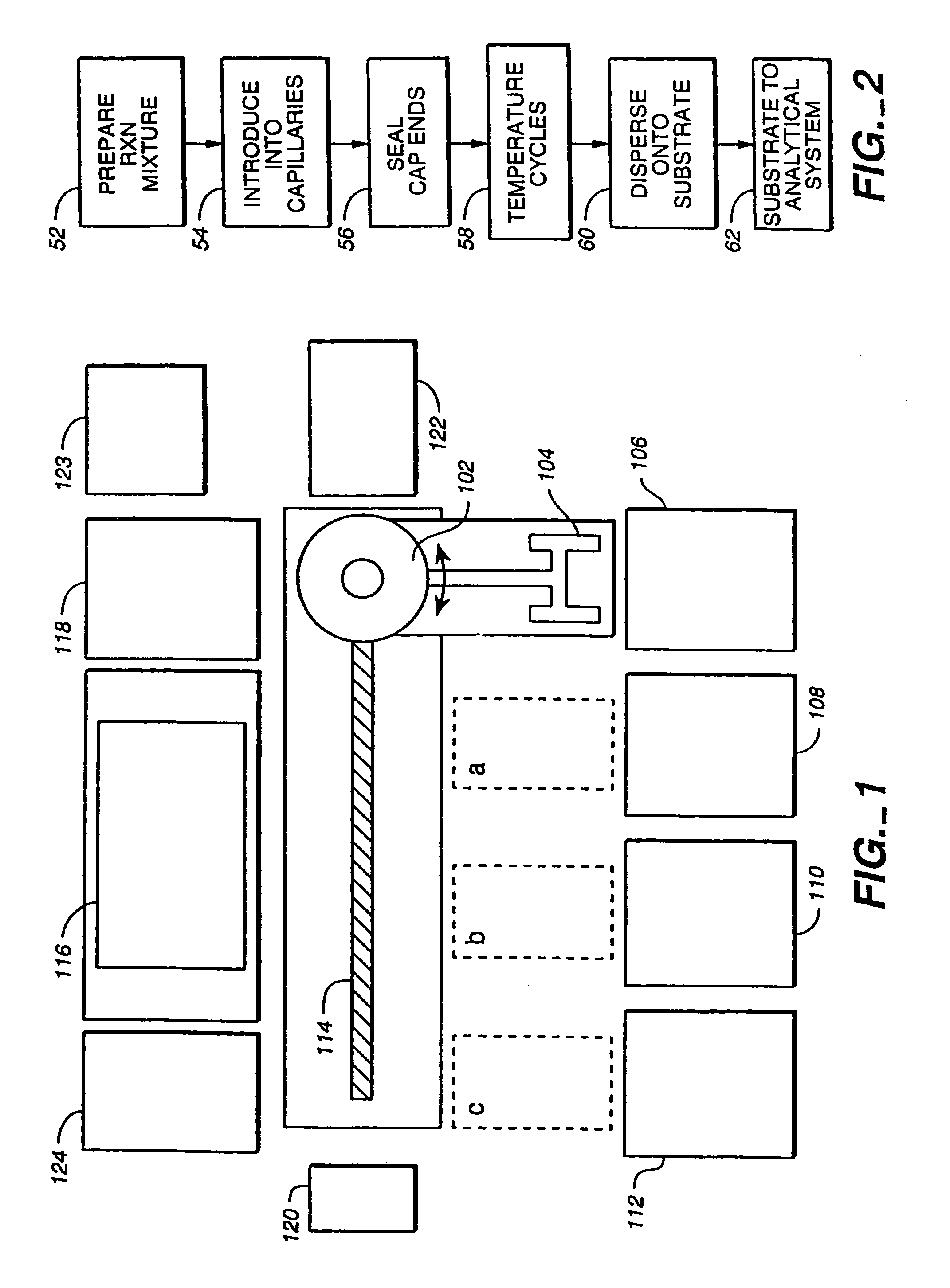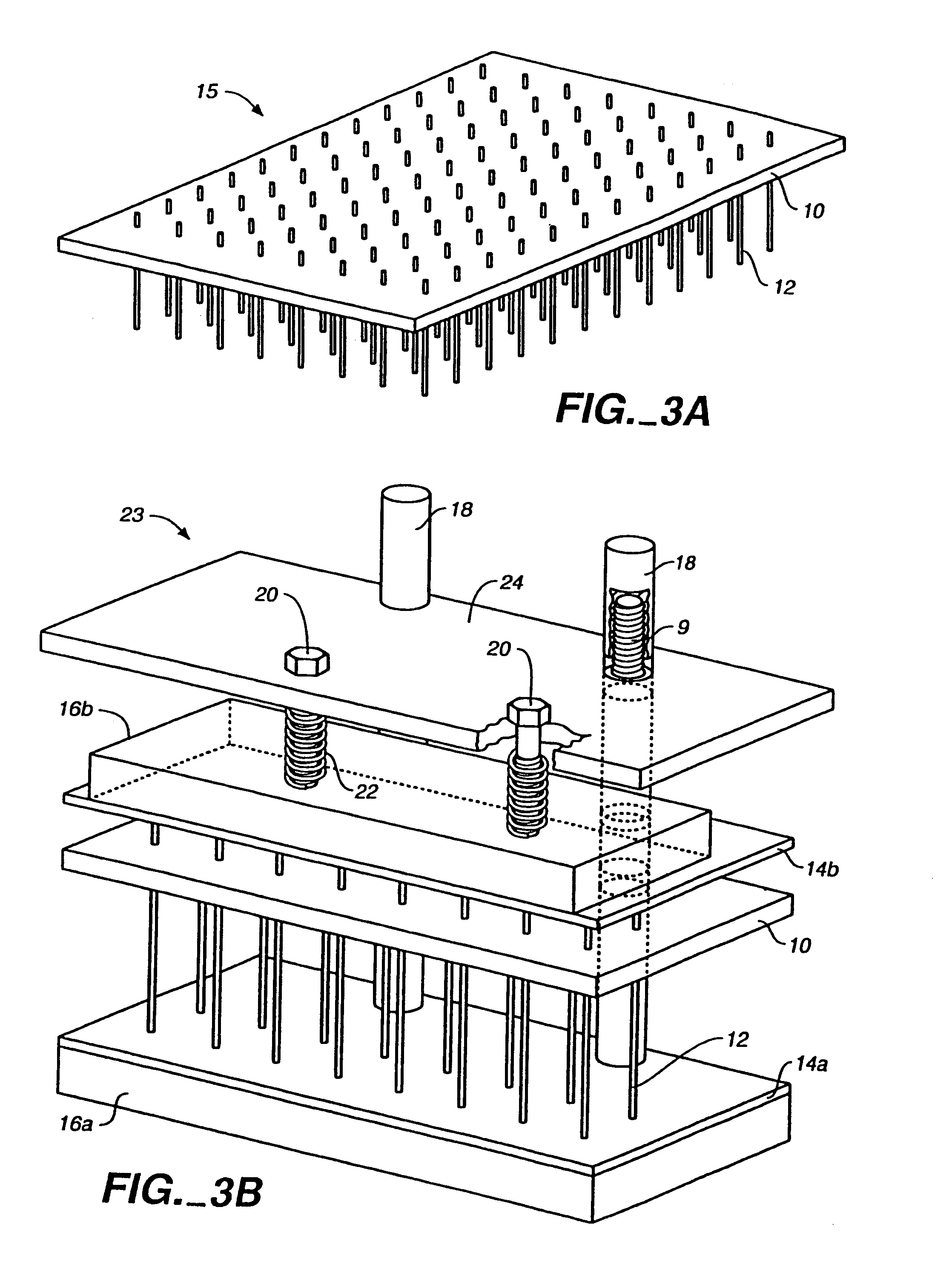Methods and apparatus for performing submicroliter reactions with nucleic acids or proteins
a technology of nucleic acids and submicroliters, applied in the field of biotechnology, can solve the problems of reducing sample volume requirements, reducing throughput and cost, and presenting significant barriers to increase throughput and cost reduction, and achieving rapid temperature changes.
- Summary
- Abstract
- Description
- Claims
- Application Information
AI Technical Summary
Benefits of technology
Problems solved by technology
Method used
Image
Examples
example 1
Dye-Primer DNA Sequencing Analyzed by Capillary Electrophoresis
[0491]Dye-primer sequencing reactions were performed within a capillary cassette comprised of 96 uncoated 2.8 cm long, 150 μm I.D., 360 μm O.D. fused-silica capillaries. Dye-primer sequencing reactions were performed by amplifying template DNA with emission-specific primers corresponding to ddT, ddA, ddC, and ddG terminated reactions. The amplification of template was performed as single reactions in each capillary and pooled into a common well for post-reaction processing and analysis.
[0492]The color-specific primers were based on the M13-40 FWD primer (5′-FAM-GTTTTCCCAGT*CACGACG-3′)SEQ ID NO:2, with 5-carboxyfluorescein (FAM) as the donor dye, and a termination-specific fluor attached to the indicated thymine (T*) as the acceptor dye. The thymine was labeled with FAM for ddC-terminated reactions (C-FAM), 6-carboxyrhodamine for ddA reactions (A-REG), N,N,N′,N′-tetramethyl-5-carboxyrhodamine for ddG reactions (G-TMR), an...
example 2
Dye-Primer DNA Sequencing Analyzed by a Capillary Electrophoresis Microchip
[0498]In another analysis example, dye-primer reactions performed in the same capillary cassette were analyzed by direct injection into a 16 channel microfabricated “chip-based” analyzer described in detail in S. Liu, H. Ren, Q. Gao, D. J. Roach, R. T. Loder Jr., T. M. Armstrong, Q. Mao, I. Blaga, D. L. Barker, and S. B. Jovanovich, Proc. Natl. Acad, Sci. USA, 5-00. The 16-channel chip is formed by bonding two glass wafers, the top wafer has 50 um deep by 100 um wide channels etched into it by standard microfabrication methods. The pattern etched has a combination of two 8-channel groups, each with a common anode reservoir Sixteen cathode reservoirs were evenly spaced at 4.5-mm intervals in a line, as were sixteen sample and sixteen waste reservoirs. The reservoirs were formed by the drilled access holes through the top etched wafer. Sixteen 250-μm long twin-T injectors were formed by the offset of channels f...
example 3
Dye-Terminator Cycle Sequencing with Alcohol Precipitation Purification
[0500]Dye-terminator cycle sequencing was demonstrated using the capillary cassette system and alcohol precipitation for cleanup prior to capillary array electrophoresis. In this example, the sequencing reaction mix was prepared by mixing 400 μL of sequencing reagents (Dynamic ET terminator kit, Amersham Pharmacia Biotech, Part 81600) with 100 μL of 5 pmol / μL of M13-28 FWD primer (5′-TGT AAA ACG ACG GCC AGT-3′) SEQ ID NO:3. The reaction mix was distributed in 5 μL aliquots to a 96-well “reagent” plate. Mixing of template DNA and sequencing reagents was performed in the same series of steps described in Example 1, using a transfer cassette was used to transfer 500 nL of DNA samples and a reaction cassette to transfer 500 nL of sequencing reagents from the reagent plate to the wells of the mix plate. This same reaction cassette was then filled by capillary action with the template / reagent mixture.
[0501]The capillar...
PUM
| Property | Measurement | Unit |
|---|---|---|
| volume | aaaaa | aaaaa |
| diameters | aaaaa | aaaaa |
| interior volume | aaaaa | aaaaa |
Abstract
Description
Claims
Application Information
 Login to View More
Login to View More - R&D
- Intellectual Property
- Life Sciences
- Materials
- Tech Scout
- Unparalleled Data Quality
- Higher Quality Content
- 60% Fewer Hallucinations
Browse by: Latest US Patents, China's latest patents, Technical Efficacy Thesaurus, Application Domain, Technology Topic, Popular Technical Reports.
© 2025 PatSnap. All rights reserved.Legal|Privacy policy|Modern Slavery Act Transparency Statement|Sitemap|About US| Contact US: help@patsnap.com



